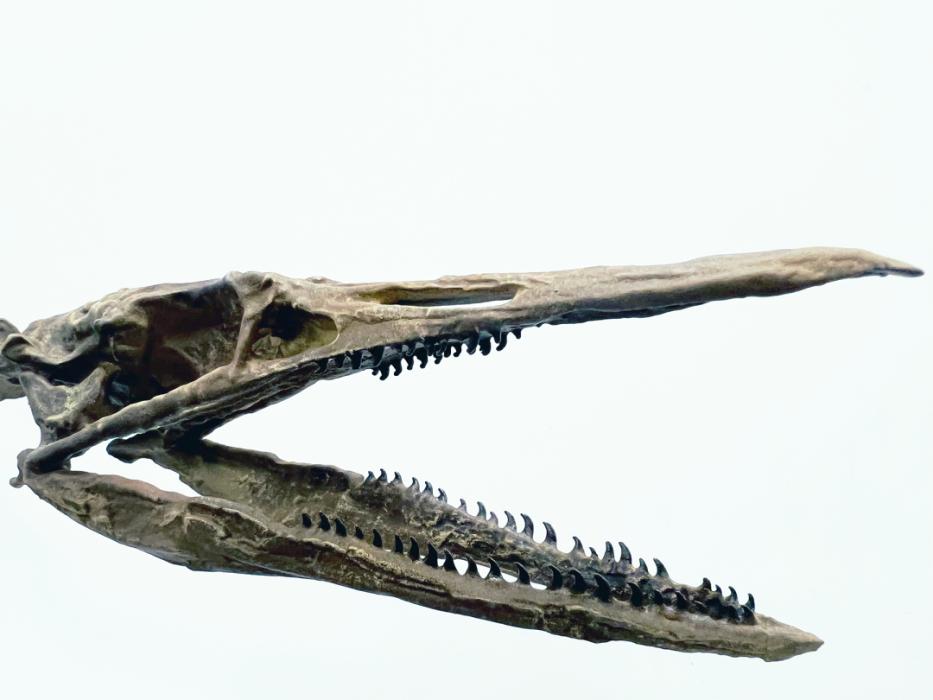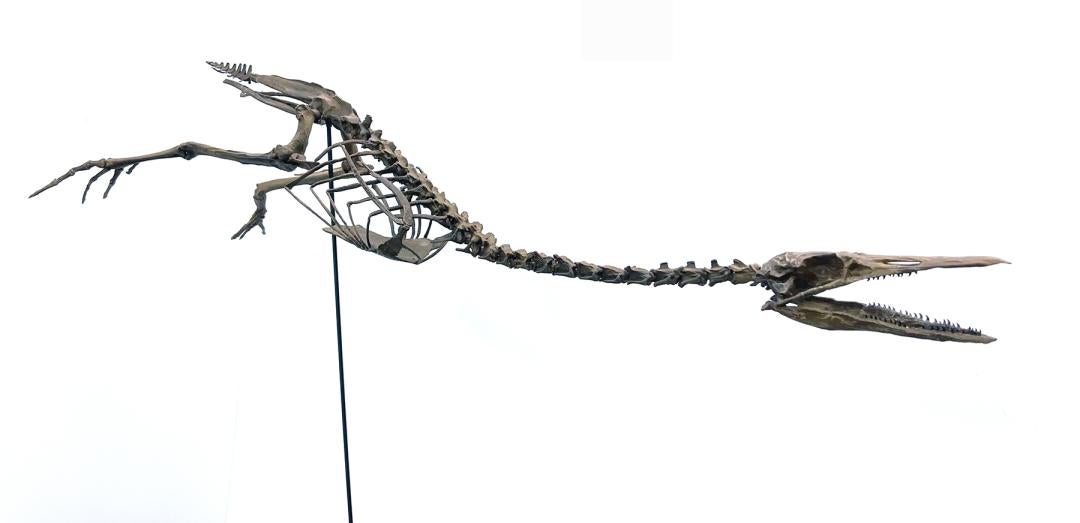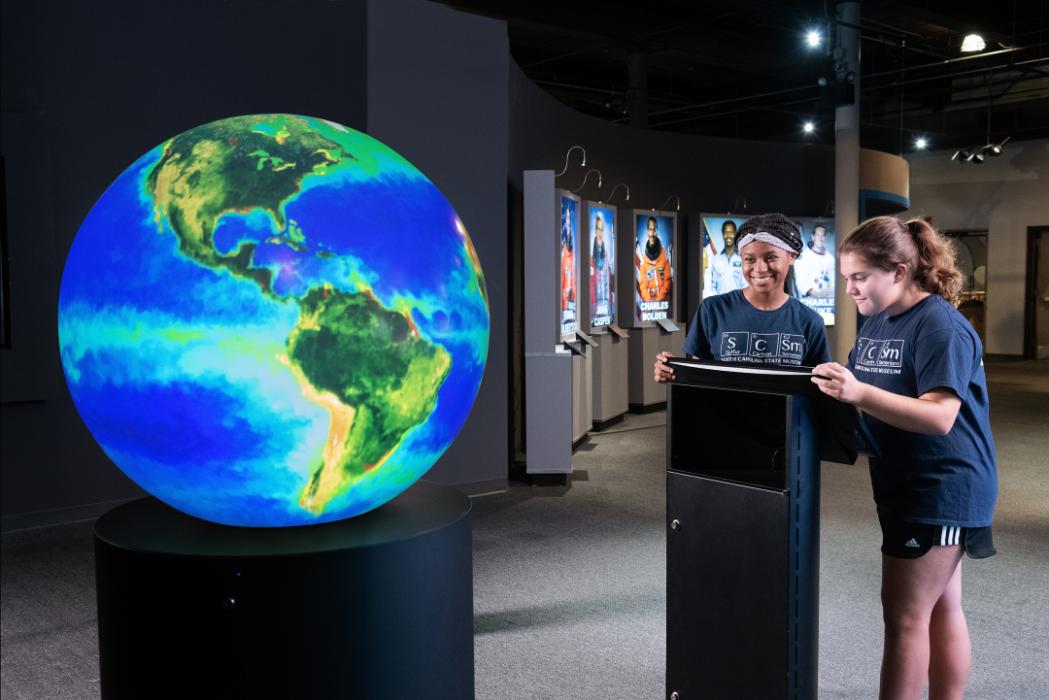
Did you know that the Natural History Collection at the State Museum contains nearly 1 million fossils and specimens?

The South Carolina State Museum recently acquired the cast skeleton of an extinct bird called Parahesperornis (“alongside western bird”). This animal lived around 83 million years ago in what is now central Kansas, USA. At the time, the area was covered by the Western Interior Seaway, which stretched from Texas to Canada.
Parahesperornis was about three feet long and, although it couldn’t fly, it used strong legs and large feet to dive after fish, which it caught in its toothed jaws. The toothed jaws are a remnant of the evolution of birds from dinosaurs like Velociraptor, which were made (in)famous in the Jurassic Park movies.

Parahesperornis was described in 1984 and is one of about 30 species of related diving birds that are primarily from North America (USA and Canada), and less commonly from Europe and Asia. Among modern birds, Parahesperornis is thought to be most closely related to the group that includes ducks and chickens (Galloanserae).









